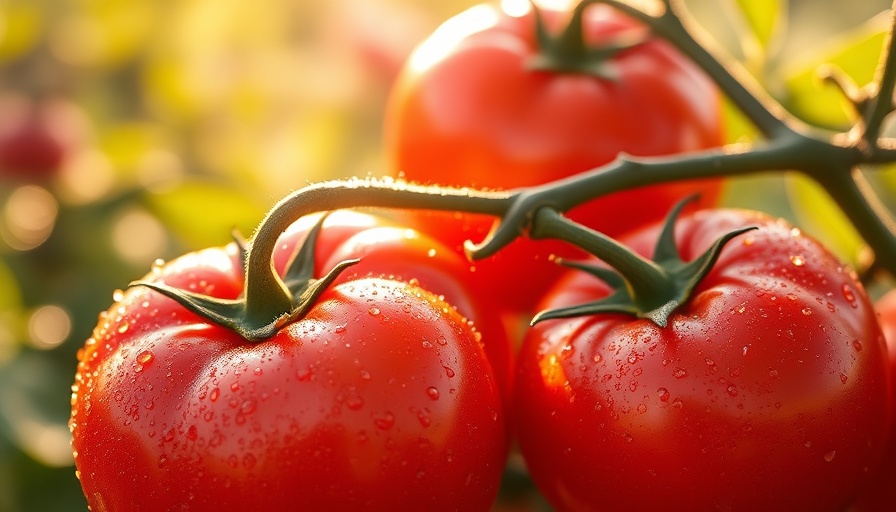
Understanding the Sun Requirements of Tomatoes
When it comes to growing tomatoes, understanding how much sun they need is essential for nurturing healthy plants and producing delicious fruits. Without sufficient sunlight, your tomatoes may struggle to reach their full potential. Tomato plants thrive best in full sun, which typically means at least six hours of direct sunlight each day.
The Journey Starts with Seeds
When starting with tomato seeds, you don't need to worry about light during germination. However, after the seeds have sprouted, they require a commitment to sunshine. Ideally, tomato seedlings should bask in about six hours of direct sunlight daily. To maximize their growth, consider placing them in a south-facing window or utilizing grow lights if natural light is insufficient.
Creating the Perfect Environment for Seedlings
To foster proper growth in your seedlings, ensure your grow lights are positioned at the right distance based on their specifications. If you notice your seedlings are becoming elongated or turning white, they may be struggling from inadequate light or, conversely, getting too much. Observing these signs can guide your adjustments and help nurture strong plants ready for transplanting.
The Needs of Mature Plants
As your tomato plants mature, their demands for sunlight amplify. Ideally, they should receive eight or more hours of direct sunlight to flourish. This is crucial as tomatoes are native to the sun-kissed regions of South America, which contributes to their high light requirements. Many gardeners, myself included, have tried growing tomatoes in partial sun, only to find the yield and quality of fruits significantly diminished.
Exceptions to the Rule: When Less Sun Might Work
While it's clear that tomatoes prefer abundant sunlight, there are occasions when variations in sunlight availability can work in your favor. If your garden has shaded areas or if you're working with varieties known to tolerate lower light conditions, understanding these exceptions can help you make the best choices for your space.
Additional Tips to Maximize Sun Utilization
- Choose the Right Varieties: Some tomato varieties are more shade-tolerant than others. Research and pick those that suit your garden's light conditions.
- Plant Strategically: Position taller plants away from your tomato plants to minimize overshadowing and ensure they receive as much sun as possible.
- Use Reflective Surfaces: Incorporate reflective materials around your garden to bounce additional sunlight onto your plants, maximizing their exposure.
- Monitor for Pests: Gardens with poor sunlight also tend to attract pests. Stay vigilant against these threats to ensure your tomatoes remain healthy and productive.
Future Considerations for Tomato Growth Management
As climate patterns shift and gardening trends evolve, consider how your approach to growing tomatoes might need to adapt. With the push towards climate-friendly gardening practices, selecting local varieties and incorporating eco-conscious methods can enhance your gardening experience while yielding productive results.
Final Thoughts and Gardening Encouragement
Gardening is a journey of discovery and connection not only with the earth but also with our communities. By understanding the light requirements for tomatoes and meticulously planning your garden, you can cultivate vibrant plants yielding rich harvests. Even amidst shade from towering trees, mindful adjustments can lead to victorious growth.
Embrace the opportunity to experiment with your gardening techniques as you learn what works best in your environment, creating a patch of green that ultimately contributes to your self-sufficiency and well-being.
 Add Row
Add Row  Add
Add 




 Add Row
Add Row  Add
Add 

Write A Comment